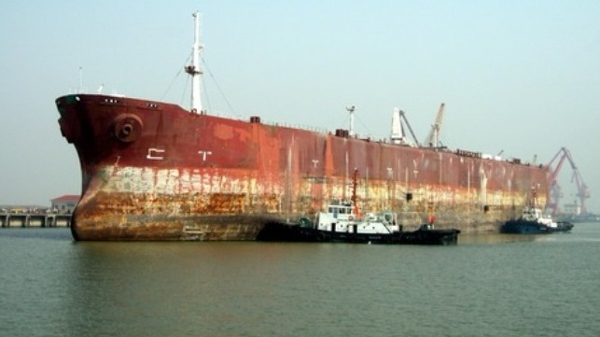The revenues of the domestic ship-breaking industry are forecast to increase by 10% YoY in FY21, due to increased availability of condemned vessels and higher rates of steel scrap, stated Crisil on Monday.
With India implementing the Recycling of Ships Act, 2019, and joining the Hong Kong International Convention (HKC), which provides a framework for ship recycling, the move has strengthened the country’s leadership position worldwide.
The report noted that from the second quarter of FY21 (July 2020), there was an increase in the number of vessels purchased bought for ship breaking.
As per Crisil, usually, the procurement rate for vessels is about US$ 20-30 per tonne higher than the sale rate for steel scrap. The key to profit margins lies in the sale of higher-value non-ferrous metals, oil, and furniture contained on condemned ships, which form a substantial part of the steel scrap of the vessel.
Mr. Rahul Guha, Director, Crisil Ratings, said, “Indian ship-breakers are expected to purchase between 230 and 240 vessels, with a combined weight of more than 1.9 million light displacement tonnage (LDT) in FY21, compared to 214 vessels weighing 1.77 million LDT purchased in FY20. For now, the implementation of steel scrap also improved to Rs. 27,624 (US$ 380.05) per ton on average in FY21, compared to Rs. 26,558 (US$ 365.38) per ton in FY20. As a result, the revenues of the industry are likely to increase by 10% on an annual basis.”
According to Crisil, the government envisages doubling India’s ship recycling capacity by FY24 by targeting more European Union scrap vessels utilising HKC. This should enable the domestic ship-breaking industry to widen the gap with its neighbours and cement its pole position.
Of India’s 150 ship-breaking yards, 90 are HKC-certified, providing it an advantage over its competitors (Pakistan and Bangladesh) which have not yet joined the HKC.
Ms. Neha Sharma, Associate Director, Crisil Ratings, said, “the steady demand for steel and ongoing momentum in decommissioning vessels would push industry revenue up 10-15% annually in FY22. This will strengthen the overall credit risk profile of ship-breakers over the medium term. “
Further, the Union budget for FY22 announced a reduction in duty on imported steel, that could result to dumping from China and lower scrap rates. Increased trade volumes during the post-lock period, sent freight rates upward, thus bringing back the profitability of sailing vessels.
You may also like
-
Trade Connect E-platform For Exports Is Single Window, Fast, Accessible And Transformational: Shri Piyush Goyal
-
Dot Simplifies Approval Processes For Telecom Licenses And Wireless Equipment
-
Coal Production and Supply Trends on Positive Trajectory
-
Union Minister To Release Booklets On Promotion Of Indigenous Species & Conservation Of States Fishes
-
2nd India-Japan Finance Dialogue held in Tokyo on 6th September, 2024
